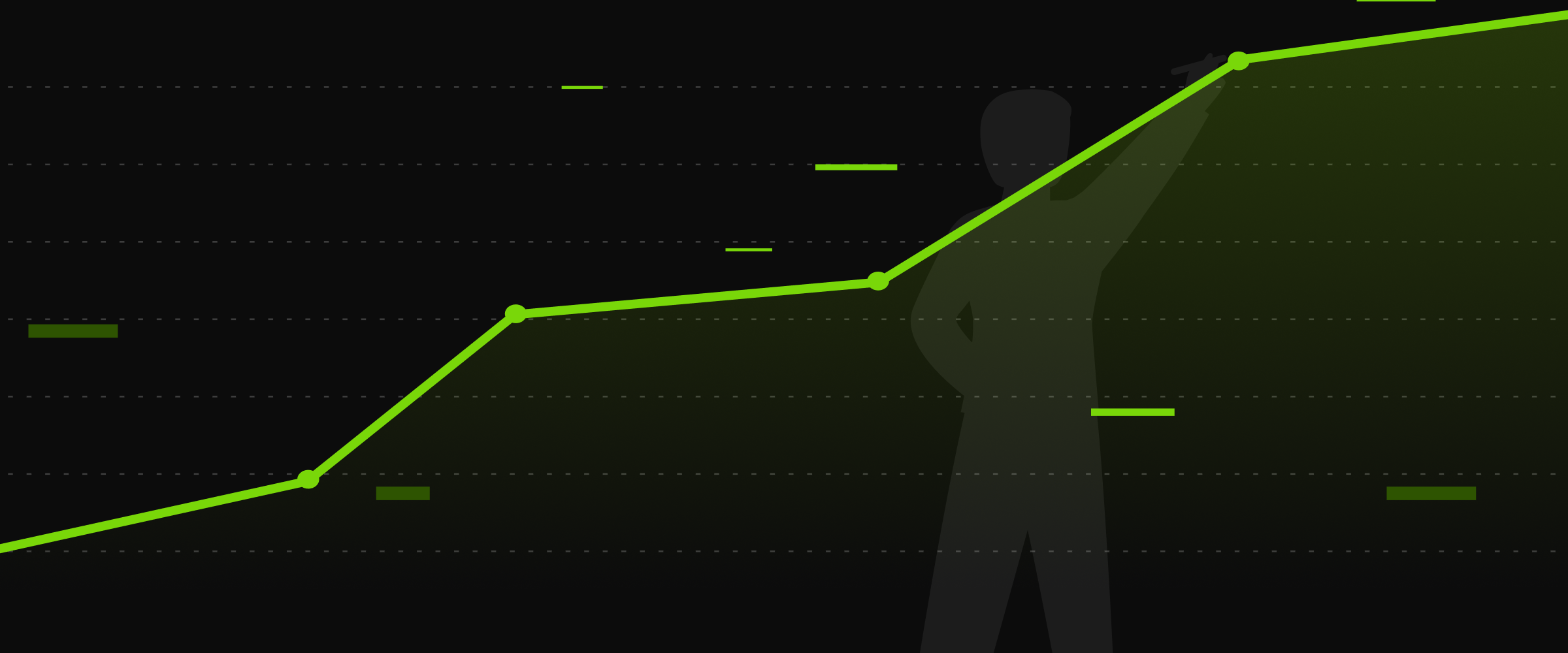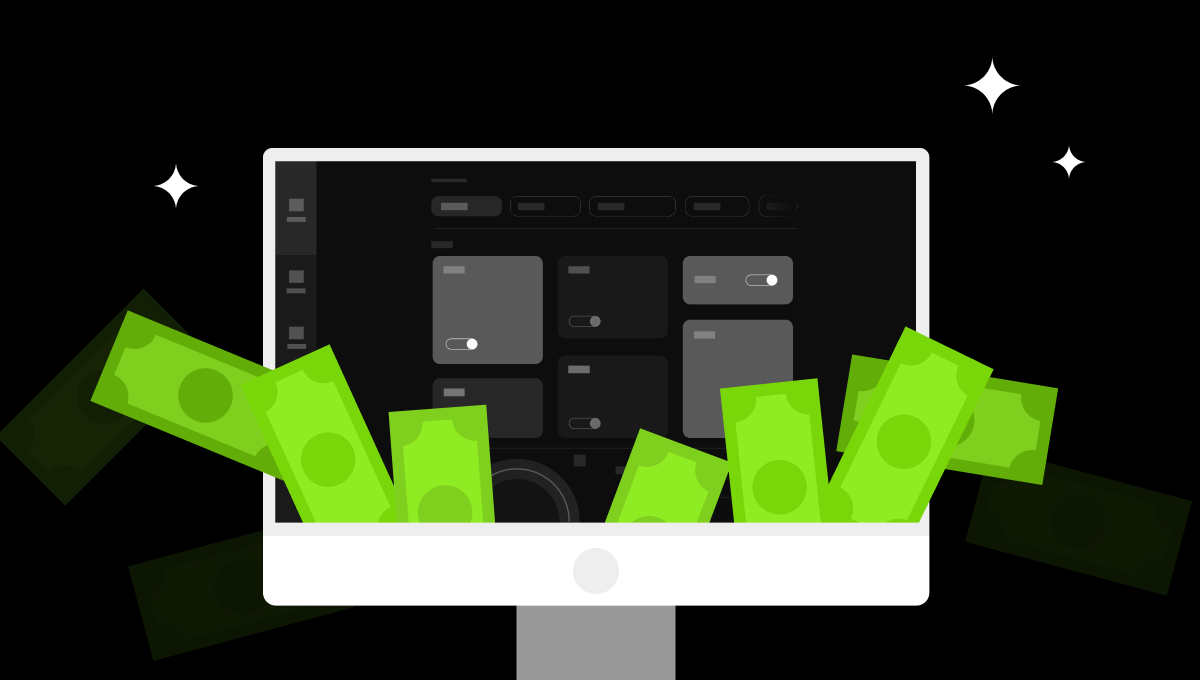Monetization plays a key role for entrepreneurs, especially in the online space. Once a company invests in automating its income streams, it begins saving in many aspects of its business. For example, it can reduce expenses on renting costly spaces, optimize processes, and increase workforce efficiency.
To ensure your website or application generates profit, you need to plan and implement promising monetization options: commissions on sales, advertising integrations, or paid subscriptions for clients.
The methods you choose to generate profit directly influence your final income. Not just the amount, but the regularity of financial inflows. Your platform can generate either one-time or recurring income, and both types have their pros and cons.
One-Time Income

One-time income is generated from a single transaction without a guarantee of future purchases.
Selling Digital Products
Imagine you have developed a digital solution and want to sell it. You have a couple of options: sell it once with full rights to the project or sell copies with technical support.
From a commercial standpoint, the latter is more profitable as your income grows with the number of buyers. This approach allows you to not only earn from sales but also from providing services, updates, and platform maintenance. However, if you're not planning ongoing support and want to receive a large lump sum, selling the resource outright is also an option.
One-Time Service Subscription
This monetization method gives the client access to functionality without the obligation of recurring payments, for example, disabling ads or accessing exclusive content. In this case, the owner receives a one-time payment without long-term commercial relationships.
In both examples, selling products provides income only once, which doesn’t ensure stable profits. At one point, you may exceed sales targets, but at another, you may face a lack of demand and conversion drop.
Recurring Income

Regular income solves the problem of one-time earnings. Its tools ensure uninterrupted earnings throughout the entire duration of client relationships, improving business predictability and sustainability, and allowing the company to plan its budget for future periods.
Sales Commissions
The company receives a certain percentage from the total sales of goods or services made through its platform. This is a popular monetization method among e-commerce platforms, such as marketplaces and aggregators.
Recurring Subscriptions
Users gain access to specific products or services for a monthly, quarterly, or yearly fee with the option to auto-renew. This is commonly used by online services, streaming video and music applications, cloud storage, and service listing platforms.
Donations
This monetization method involves receiving financial support from users in the form of voluntary contributions. It’s not suitable for consistent commercial project financing, but is often practiced by non-profit organizations, social networks, and streaming services.
Advertising Slots
Placing ads from those interested in promoting on your platform is a classic way of generating profit. Integrations can be placed on various parts of the website, such as the homepage, articles, blogs, videos – wherever they will be most visible and relevant to visitors.
Similarly, in applications, ads can be published in different formats: from banners and videos to interactive ads and native integrations.
Using recurring income tools in your business strategy is more preferable as they provide more reliable capital formation in the long term. One-time income may bring quick results but won’t provide you with a strategic “financial cushion” for the future.
How to Earn from Your Website or Application
To determine which of the monetization methods listed above is suitable for your project, you need to identify its unique features:
- the goals of the development,
- the field of activity,
- approximate target audience traffic,
- expected income.
The success of earning from websites or applications depends directly on users, their activity, and their interest in the project. Monetization brings profit when your platform is optimized for SEO and gets enough reach. For example, implementing LSI keywords into your website content will help potential clients find your resource and improve its ranking in search results.
The specifics of the internet resource greatly affect the monetization methods used. It’s important to understand which projects are suitable for each monetization type. Let’s highlight three main groups of platforms that successfully generate revenue.
E-Commerce

Projects in the e-commerce field include marketplaces and aggregator services. Their main monetization method is sales commissions, listing fees, or a fee for the number of goods from client companies.
In addition to primary income, e-commerce can earn additional revenue from ad placements on the homepage, showcasing items in the “Recommended” section, or investment agreements with certain sellers.
There are also ready-made service packages for organizations. By paying for the selected package, they get additional order management and customer base management features, technical support, and personalized settings for promotion.
Enterprise

Large-scale projects capable of handling complex business operations use long-term monetization methods.
For instance, if you have developed a CRM system, it would be beneficial to sell subscriptions to companies for periods ranging from 3 months to a year. During this time, you will form a client base and achieve stable revenue.
Additionally, you can charge for extended system functionality. By purchasing this, users will gain access to platform-specific settings, templates for documents, automated report generation, and other options.
One-time income is also possible – for example, setting up the service by a specialist or training the client’s employees. However, competition in the market has forced many system owners to provide these services for free.
Non-Commerce

Non-profit companies often focus their website or application monetization on donations, attracting sponsors, and raising awareness of their mission and goals. Creating a donation module for contributions from private and legal entities can become the main monetization method. If the company has an interested target audience, voluntary donations are a simple and beneficial solution.
At the same time, non-profit organizations can use advertisements: partner referral programs, banners, and videos on relevant topics, or sponsored integrations.
Advice – Set a Price Relevant to the Market
When choosing a monetization strategy for your website or application, it’s important to set an optimal price. The additional features that will only be available after payment must meet the needs of your audience.
Study your target audience, their financial capabilities, and their willingness to pay for your product or service. Choose a price that is both accessible and attractive to the majority.
For example, offering several levels of a product or service with different functionality and prices is an effective way to meet demand. Clients will choose the package that suits their needs and budget.
Profitable Monetization Implementation for Your Platform

You should start working on a monetization strategy even before the product's development and launch. This will allow the company to initially build its business model in a way that maximizes revenue and ensures financial stability for the project. However, the true effectiveness of the strategy can only be determined in practice.
To avoid risks, you should first develop an MVP (Minimum Viable Product). By launching a minimally viable version on the market, you can test its demand and identify the features that are most valuable to users. Based on the feedback, you can create a monetization configuration that addresses real customer needs and preferences.
You don’t need to use all the available monetization methods or focus solely on profit. Testing a ready project with your target audience will give you real data to make informed hypotheses. This will help you select the most effective monetization methods for your project.

If you are not ready to choose the strategy yourself, consult with specialists. They can provide recommendations on the optimal pricing model that considers the specific features of your product or service. They will offer methods that bring the most profit and ways to implement them.
The MediaTen team can help you develop and implement an effective monetization strategy for your project. We have extensive experience in creating marketplaces and commercial services.





